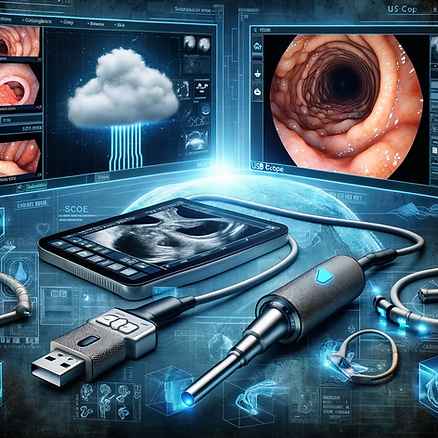Next-Generation Endoscopy: A Glimpse into the Future of GI and ENT Procedures

The field of endoscopy has seen significant advancements in visualization systems, particularly in the areas of gastrointestinal (GI) and ear, nose, and throat (ENT) procedures. These advancements have revolutionized the way doctors diagnose and treat various conditions, leading to improved patient outcomes and enhanced clinical capabilities.
Technological Developments
High-Definition Imaging: One of the key advancements in endoscopy visualization systems is the introduction of high-definition imaging. These systems provide doctors with clearer and more detailed images, allowing for better visualization of the targeted area. High-definition imaging enables doctors to detect abnormalities with greater accuracy and precision.
Narrow Band Imaging (NBI): NBI is a technology that enhances the visualization of blood vessels and surface patterns in the gastrointestinal tract. It uses specific wavelengths of light to highlight the mucosal surface, making it easier for doctors to identify abnormalities such as polyps or early-stage cancers. NBI has been shown to improve the detection rate of gastrointestinal lesions.
3D Imaging: Three-dimensional imaging has emerged as a significant advancement in endoscopy visualization systems. It provides doctors with a more realistic and immersive view of the internal organs, allowing for better spatial orientation and depth perception. 3D imaging can be particularly beneficial in complex procedures where precise navigation is crucial.
Virtual Chromoendoscopy: Virtual chromoendoscopy is a technique that simulates the effect of traditional chromoendoscopy without the need for dye. It enhances the visualization of mucosal patterns and vascular structures, aiding in the detection of abnormalities. Virtual chromoendoscopy can be used in conjunction with other imaging modalities to improve diagnostic accuracy.
Integration of CloudEndo, iCap, and USB Scopes
CloudEndo's Role in Endoscopy Advancements: CloudEndo's technology enhances the efficiency and effectiveness of GI and ENT procedures by providing seamless cloud-based data management. This system allows for easy storage, retrieval, and sharing of endoscopic images and videos, facilitating better collaboration among healthcare professionals and improving patient care continuity.
iCap Technology in Enhancing Diagnostic Accuracy: iCap's advanced software integrates seamlessly with endoscopy systems to provide high-quality images and videos. This technology not only enhances the clarity and detail of endoscopic visuals but also simplifies the documentation process, allowing doctors to focus more on patient care and less on administrative tasks.
USB Scopes: A Leap in Endoscopy Visualization: USB scopes represent a significant leap forward in endoscopy visualization. These compact, portable devices can be connected directly to a computer, providing real-time high-definition images. The flexibility and ease of use of USB scopes make them an invaluable tool in various settings, from traditional hospitals to remote clinics.
Market Growth Projections
The market for endoscopy visualization systems is expected to witness significant growth in the coming years. Factors such as the increasing prevalence of gastrointestinal and ENT disorders, rising demand for minimally invasive procedures, and technological advancements are driving the market expansion. According to a report by Grand View Research, the global endoscopy devices market is projected to reach USD 47.6 billion by 2025, growing at a CAGR of 7.8% during the forecast period.
Clinical Benefits
The advancements in endoscopy visualization systems, including the contributions of CloudEndo, iCap, and USB scopes, have brought several clinical benefits for GI and ENT doctors:
-
Improved Diagnostic Accuracy: Enhanced visualization and accurate imaging contribute to early detection and precise interventions.
-
Enhanced Visualization: High-definition imaging and 3D visualization, complemented by the capabilities of iCap and USB scopes, have significantly improved visualization during procedures.
-
Minimally Invasive Procedures: These advanced systems have enabled the development of less invasive procedures, offering benefits like shorter recovery times.
-
Patient Comfort: The use of advanced imaging technologies and minimally invasive techniques leads to more comfortable patient experiences.
Impact on Patient Outcomes
The integration of advanced technologies has had a significant impact on patient outcomes, with early detection of abnormalities, precise treatment planning, and reduced complications.
Future Prospects
The field is poised for further advancements with potential integrations of AI, augmented reality, wireless capsule endoscopy, and robotic-assisted endoscopy.
Advancements in endoscopy visualization systems, including the roles of CloudEndo, iCap, and USB scopes, have transformed GI and ENT procedures. These innovations are setting the stage for the future of endoscopic medicine, enhancing patient outcomes and shaping the field's evolution.